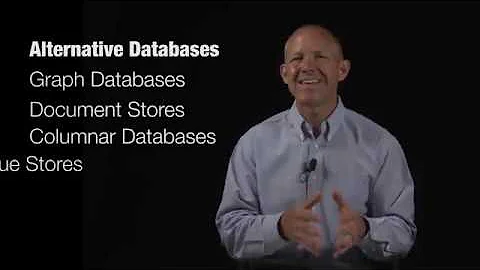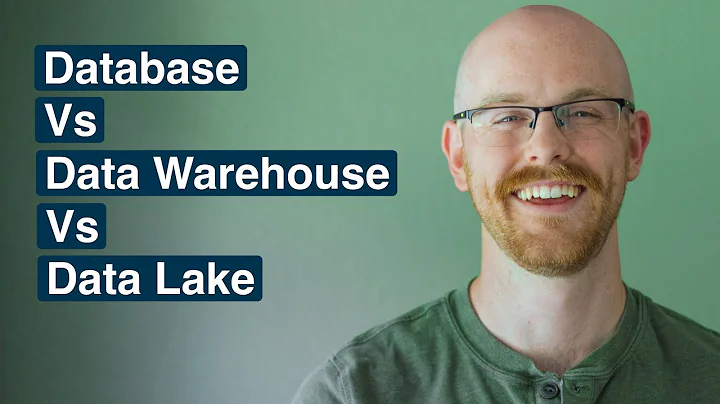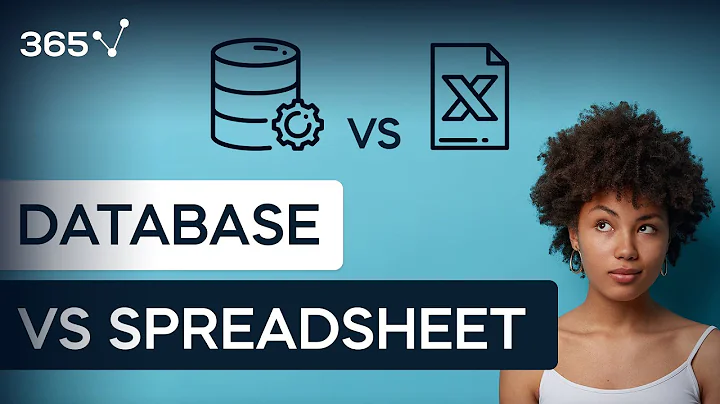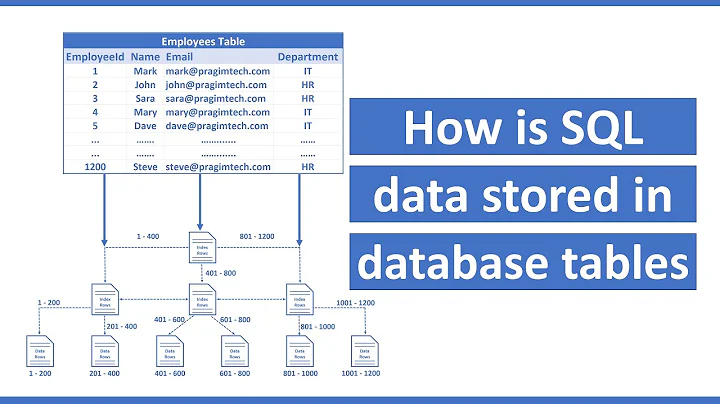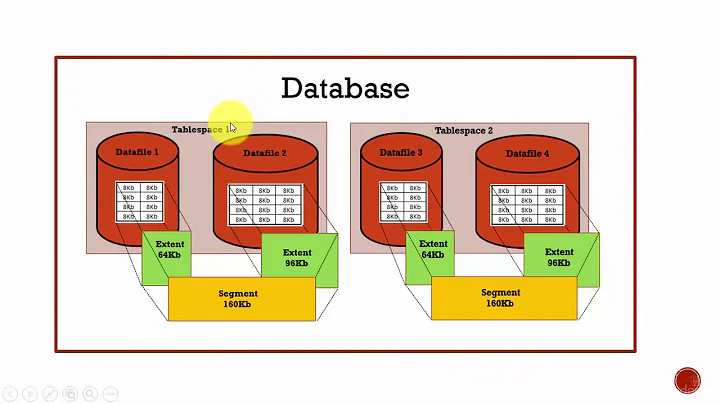How to think in data stores instead of databases?
Solution 1
There's two main things to get used to about the App Engine datastore when compared to 'traditional' relational databases:
- The datastore makes no distinction between inserts and updates. When you call put() on an entity, that entity gets stored to the datastore with its unique key, and anything that has that key gets overwritten. Basically, each entity kind in the datastore acts like an enormous map or sorted list.
- Querying, as you alluded to, is much more limited. No joins, for a start.
The key thing to realise - and the reason behind both these differences - is that Bigtable basically acts like an enormous ordered dictionary. Thus, a put operation just sets the value for a given key - regardless of any previous value for that key, and fetch operations are limited to fetching single keys or contiguous ranges of keys. More sophisticated queries are made possible with indexes, which are basically just tables of their own, allowing you to implement more complex queries as scans on contiguous ranges.
Once you've absorbed that, you have the basic knowledge needed to understand the capabilities and limitations of the datastore. Restrictions that may have seemed arbitrary probably make more sense.
The key thing here is that although these are restrictions over what you can do in a relational database, these same restrictions are what make it practical to scale up to the sort of magnitude that Bigtable is designed to handle. You simply can't execute the sort of query that looks good on paper but is atrociously slow in an SQL database.
In terms of how to change how you represent data, the most important thing is precalculation. Instead of doing joins at query time, precalculate data and store it in the datastore wherever possible. If you want to pick a random record, generate a random number and store it with each record. There's a whole cookbook of this sort of tips and tricks here.
Solution 2
The way I have been going about the mind switch is to forget about the database altogether.
In the relational db world you always have to worry about data normalization and your table structure. Ditch it all. Just layout your web page. Lay them all out. Now look at them. You're already 2/3 there.
If you forget the notion that database size matters and data shouldn't be duplicated then you're 3/4 there and you didn't even have to write any code! Let your views dictate your Models. You don't have to take your objects and make them 2 dimensional anymore as in the relational world. You can store objects with shape now.
Yes, this is a simplified explanation of the ordeal, but it helped me forget about databases and just make an application. I have made 4 App Engine apps so far using this philosophy and there are more to come.
Solution 3
I always chuckle when people come out with - it's not relational. I've written cellectr in django and here's a snippet of my model below. As you'll see, I have leagues that are managed or coached by users. I can from a league get all the managers, or from a given user I can return the league she coaches or managers.
Just because there's no specific foreign key support doesn't mean you can't have a database model with relationships.
My two pence.
class League(BaseModel):
name = db.StringProperty()
managers = db.ListProperty(db.Key) #all the users who can view/edit this league
coaches = db.ListProperty(db.Key) #all the users who are able to view this league
def get_managers(self):
# This returns the models themselves, not just the keys that are stored in teams
return UserPrefs.get(self.managers)
def get_coaches(self):
# This returns the models themselves, not just the keys that are stored in teams
return UserPrefs.get(self.coaches)
def __str__(self):
return self.name
# Need to delete all the associated games, teams and players
def delete(self):
for player in self.leagues_players:
player.delete()
for game in self.leagues_games:
game.delete()
for team in self.leagues_teams:
team.delete()
super(League, self).delete()
class UserPrefs(db.Model):
user = db.UserProperty()
league_ref = db.ReferenceProperty(reference_class=League,
collection_name='users') #league the users are managing
def __str__(self):
return self.user.nickname
# many-to-many relationship, a user can coach many leagues, a league can be
# coached by many users
@property
def managing(self):
return League.gql('WHERE managers = :1', self.key())
@property
def coaching(self):
return League.gql('WHERE coaches = :1', self.key())
# remove all references to me when I'm deleted
def delete(self):
for manager in self.managing:
manager.managers.remove(self.key())
manager.put()
for coach in self.managing:
coach.coaches.remove(self.key())
coaches.put()
super(UserPrefs, self).delete()
Solution 4
I came from Relational Database world then i found this Datastore thing. it took several days to get hang of it. well there are some of my findings.
You must have already know that Datastore is build to scale and that is the thing that separates it from RDMBS. to scale better with large dataset, App Engine has done some changes(some means lot of changes).
RDBMS VS DataStore
Structure
In database, we usually structure our data in Tables, Rows which is in Datastore it becomes Kinds and Entities.
Relations
In RDBMS, Most of the people folllows the One-to-One, Many-to-One, Many-to-Many relationship, In Datastore, As it has "No Joins" thing but still we can achieve our normalization using "ReferenceProperty" e.g. One-to-One Relationship Example .
Indexes
Usually in RDMBS we make indexes like Primary Key, Foreign Key, Unique Key and Index key to speed up the search and boost our database performance. In datastore, you have to make atleast one index per kind(it will automatically generate whether you like it or not) because datastore search your entity on the basis of these indexes and believe me that is the best part, In RDBMS you can search using non-index field though it will take some time but it will. In Datastore you can not search using non-index property.
Count
In RDMBS, it is much easier to count(*) but in datastore, Please dont even think it in normal way(Yeah there is a count function) as it has 1000 Limit and it will cost as much small opertion as the entity which is not good but we always have good choices, we can use Shard Counters.
Unique Constraints
In RDMBS, We love this feature right? but Datastore has its own way. you cannot define a property as unique :(.
Query
GAE Datatore provides a better feature much LIKE(Oh no! datastore does not have LIKE Keyword) SQL which is GQL.
Data Insert/Update/Delete/Select
This where we all are interested in, as in RDMBS we require one query for Insert, Update, Delete and Select just like RDBMS, Datastore has put, delete, get(dont get too excited) because Datastore put or get in terms of Write, Read, Small Operations(Read Costs for Datastore Calls) and thats where Data Modeling comes into action. you have to minimize these operations and keep your app running. For Reducing Read operation you can use Memcache.
Solution 5
Take a look at the Objectify documentation. The first comment at the bottom of the page says:
"Nice, although you wrote this to describe Objectify, it is also one of the most concise explanation of appengine datastore itself I've ever read. Thank you."
Related videos on Youtube
Jim
Updated on August 13, 2020Comments
-
Jim over 3 years
As an example, Google App Engine uses Google Datastore, not a standard database, to store data. Does anybody have any tips for using Google Datastore instead of databases? It seems I've trained my mind to think 100% in object relationships that map directly to table structures, and now it's hard to see anything differently. I can understand some of the benefits of Google Datastore (e.g. performance and the ability to distribute data), but some good database functionality is sacrificed (e.g. joins).
Does anybody who has worked with Google Datastore or BigTable have any good advice to working with them?
-
Murali Krishna Pinjala about 14 yearsDataSource is an old api that we are gradually removing - it was very tied to a database connection model. DataStore is the low level api that allows access to a "raw" streaming based approach to GIS content;using FeatureReaders and FeatureWriter.
-
Chandana about 12 yearsNow Google Cloud SQL provide relational database support for Google App Engine. If you still look for solution for data stores, you can use Google Cloud SQL.
-
 quarks almost 11 yearsYou might want to check out the Mungo Datastore API: bit.ly/13eSDpr
quarks almost 11 yearsYou might want to check out the Mungo Datastore API: bit.ly/13eSDpr
-
-
Nick Johnson over 15 yearsThe question relates specifically to Google App Engine, which uses Bigtable; using a relational database isn't an option.
-
0124816 over 15 yearsOne issue with reference properties is that they can quickly create a 1+N query problem. (Pull 1 query to find 100 people, then make another query for each one of them to get person.address.)
-
Spike0xff almost 15 yearsLink to 'reference properties' is broken, probably by addition of Java support. Try: code.google.com/appengine/docs/python/datastore/…
-
Mark Cidade almost 15 yearslink fixed. feel free to edit any answer if/when you have enough rep.
-
cbednarski over 13 yearsI like the "Let your views dictate your Models." bit. I think that's a hang-up coming from RDBMS, but it simplifies everything.

